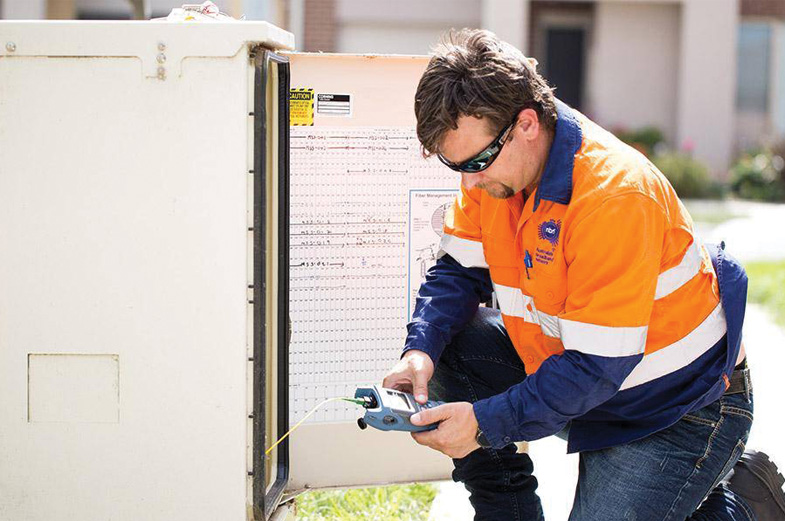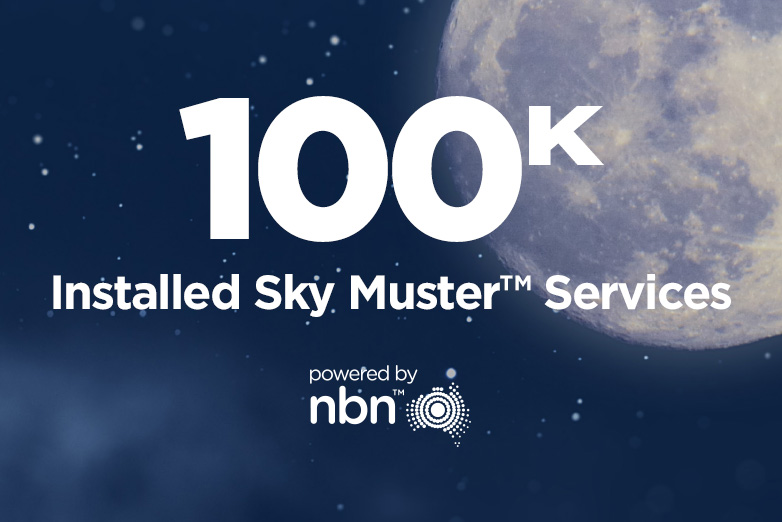Your Go-To nbn® Guide: What You Need To Know
May 2024

From being just an optional service, having a reliable internet connection has become an absolute necessity in our increasingly digital era. Despite this, some regional areas in Australia are still dealing with less-than-ideal internet services.
The nbn® was established to solve this, offering Australians improved and consistent internet speeds. Many regional homes have embraced the nbn®, but understanding its full benefits can be complex. As a leading retail service provider of nbn®, Skymesh provides this comprehensive article titled ‘Your Go-To nbn® Guide: What You Need To Know’, covering all important information about nbn®.
See what’s available at your property
Skymesh is dedicated to bridging the digital divide for regional Australia. Boasting over twenty years of experience, we provide broadband solutions suited to the unique demands of homes and businesses in regional Australia. We pride ourselves on providing seamless connectivity, excellent customer service, and flexible plans at an affordable price.
Understanding the nbn® network
Think about how essential the internet has become; it’s become an important part of our day to day. However, not all internet connections are the same. The speed and stability of one’s internet can impact everything, from how businesses run to how students learn.
Now, imagine a future where Australians can enjoy the internet access and connectivity they truly deserve. This vision is what the nbn® aims to achieve. The nbn® network was developed to enhance internet access for regional Australians, providing better opportunities for internet speed and reliability.
There are different connection types and speed tiers, depending on factors like your location and existing infrastructure, so it’s crucial to understand which one is available for you.
Different nbn® connection types
nbn® uses a mix of different technologies across Australia:
- Fibre to the Premises (FTTP). This connection type involves running a high-speed fibre optic cable directly to your home.
- Fibre to the Node (FTTN). With FTTN, a high-speed fibre optic cable is run to a central cabinet (node) in a neighbourhood. From the node, the existing copper phone lines are used to deliver the service to individual homes.
- Fibre to the Building (FTTB). This is mainly for apartment blocks and similar premises. A high-speed fibre optic cable is run to the building’s communications room, and existing technology takes it to individual apartments.
- Fibre to the Curb (FTTC). This is a newer technology where fibre is run closer to the home, typically to a telecom pit outside. From there, a copper line connects to the premises.
- Hybrid Fibre-Coaxial (HFC). This uses cable networks to reach your home as it combines fibre and coaxial cable.
- Fixed Wireless. This involves using data sent over radio signals and outdoor antennas to connect your premises to an nbn® network wirelessly.
- Sky Muster™ satellite connection. Connectivity is provided by two cutting-edge satellites in space and a satellite dish installed on your roof.
Keep in mind that each connection type has its advantages and limitations, and the type available to you generally depends on your location and the existing infrastructure.
Various nbn® speed tiers
The nbn®’s versatility isn’t just restricted to connection types; it offers different speed tiers to accommodate diverse needs. For fixed line connections, for example, the following speed tiers are available:
- nbn® 25: The typical evening speed for this tier is up to 25 Mbps download and up to 4 Mbps upload between 7.00 p.m. and 11.00 p.m., which is ideal for streaming, general browsing, and households with one to two active users.
- nbn® 50: Between 7.00 p.m. and 11.00 p.m., the typical evening speed for this tier is up to 49 Mbps download and up to 16 Mbps upload, which is ideal for HD streaming, social media, online gaming, and households with three to four active users.
- nbn® 100: This tier’s typical evening download and upload speeds are up to 96 Mbps and up to 16 Mbps, respectively, between 7.00 p.m. and 11.00 p.m., which is ideal for ultra-high-definition streaming, social media, online gaming, large file downloads, and households with over four active users.
Getting ready for the nbn® transition
Switching to the nbn® network is a big step for homes and businesses in Australia, especially for those in regional areas, as it could finally mean better and faster internet. But getting ready for this change needs some planning. Let’s break down what you need to do to get started.
Checking your eligibility
First, see if the nbn® network is available where you live. Check your address on the Skymesh platform. Just navigate our website and enter your address to find out if you can get the nbn® service. If you’re unsure or your place isn’t listed, get in touch with our team, and well do our best to help.
Preparing for installation
If you’re good to go for nbn®, the next step is installation. Make sure the space is clear for the nbn® installer to work. Move any furniture or items that might be in the way. This helps the nbn® installer set things up efficiently. Eligible users may be able to enjoy free standard installations (not including imposed nbn® charges).
Time to connect
Post-installation, the real test begins. After everything’s set up, connect your devices to the new network. Test it out and enjoy your upgraded internet experience.
Addressing common nbn® connection concerns
Running into issues with your nbn® connection? It can happen sometimes. To help you better overcome them, here’s a step-by-step guide to get you back online:
- Identify the issue: Begin by pinpointing the exact nature of the problem. Is it a drop in speed, intermittent connectivity, or a complete disconnection? Knowing the specific concern will help in resolving it more efficiently.
- Check your equipment: Ensure all your devices, including modems, routers, and connecting cables, are correctly set up and working. Sometimes, a mere restart or resetting of your modem can resolve minor glitches.
- Verify the speed: Test your internet speed using a reliable speed test website or application. Compare the results with the speed tier you’ve subscribed to, keeping in mind that during peak times, you might experience slightly lower speeds.
- Seek external advice: Consider reaching out to external experts or forums. The nbn® community and various online platforms can offer advice, share similar experiences, or suggest alternative solutions.
- Contact your service provider: If you’ve checked the basics and the issue persists, get in touch with your provider. They can offer insights into any broader network issues or guide you on specific troubleshooting steps for your connection.
Frequently Asked Questions (FAQs)
How does the nbn® differ from previous broadband infrastructures?
Before the nbn®, Australia’s internet landscape was a mix of different outdated technologies. When the nbn® network was introduced, the goal was to replace nearly everything with brand-new fibre-to-the-home services.
Unlike older networks that mainly use copper cables, for example, Fixed Line nbn® connections primarily utilise fibre-optic cables, which can transmit data faster and more reliably over long distances. Keep in mind, however, that some technologies also use hybrid connections or still rely on existing copper cables as the last part of the connection, which can affect the speed and reliability of the nbn® service.
Are there hidden costs associated with the nbn®?
The nbn® network operates as a wholesale open-access data network on a national scale. To get it installed in your home, you may have to work with a retail service provider. Generally, there aren’t hidden costs tied to an nbn® setup, but it’s always advisable to choose reputable providers, such as Skymesh. We uphold transparency in costs associated with all the internet plans we offer.
What’s the influence of the nbn® on property valuations?
In today’s highly digitised society, a good internet connection is almost just as important as a good location. With that, homes with fast and reliable internet are in high demand by people looking to buy or rent. Because the nbn® network is ready for future tech changes and the growing need for data, homes connected to it are seen as modern, which can raise their price.
Key Points to Remember
The nbn® network is designed to level the playing field for both urban and regional Australians when it comes to the accessibility of reliable internet connection services.
Offering a range of connection types such as FTTP, FTTN, FTTB, FTTC, HFC, Fixed Wireless, and Sky Muster™ satellite connection – the nbn® caters to a wide variety of internet connection needs depending on factors like location and pre-existing infrastructures.
nbn® provides a spectrum of speed tiers, each designed with specific user activities in mind, such as casual browsing, HD streaming, or intensive online gaming.
Making the shift to the nbn® network can be seamless and involves verifying your area’s eligibility, preparing your premises for installation, and conducting post-setup tests.
For optimal experience, users are encouraged to periodically check equipment, assess connection speeds, and communicate with their service providers as needed for consistent, high-quality internet access.
Making informed choices with a better understanding of the nbn®
As Australia moves from older technologies to the advanced features of the nbn® network, eligible users can finally look forward to better, more reliable internet services.
As this article ‘Your Go-To nbn® Guide: What You Need to Know’ provided you with insights on the various nbn® connection types, speed tiers, the transition to an nbn® network, and how to address typical issues after installation, youre best positioned to make an informed choice for your internet needs.




